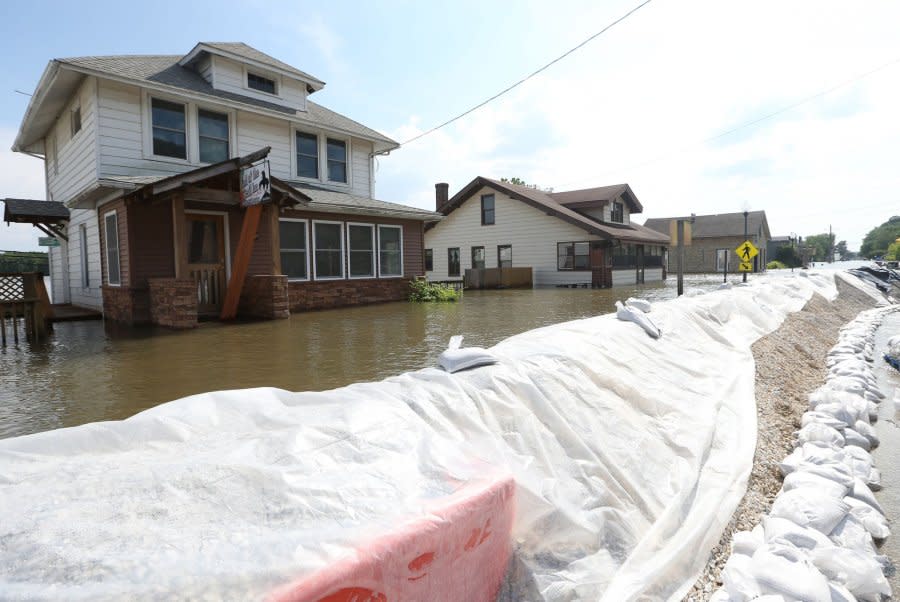Study: Minorities more likely than White people to live behind subpar levees

Sept. 5 (UPI) -- Minority groups including Hispanic and Native American communities are more likely than White people to live behind "subpar" levees, earthen embankments that protect against floodwaters, according to a study published Tuesday.
There are several thousand miles of levees in the United States, some of which date as far back as the 1700s when early settlers built them to protect crops. The levees were not designed to become critical infrastructure protecting the homes of millions of Americans.
Researchers with Tufts University and Mississippi State University found that there is "a substantially larger population of disadvantaged communities" living behind crumbling levees, according to their study published in the open-access journal Earth's Future.
"Flooding patterns are exacerbated by anthropogenic climate change in several regions, posing a significant risk to the economy, safety and well-being of the nation," the journal article reads.
"The evolving risk of flooding is shown to disproportionately affect historically underserved and socially vulnerable communities."
Minority groups are more likely to live in low-lying areas with poor drainage systems, exposing their homes to flooding.
The researchers calculated percent disparity rates for different groups to draw their conclusions.
Percent disparity is a measure used to express the difference between the values of two groups. In the study, the disparity represents the percentage of each vulnerable group of interest in the leveed area relative to non-leveed area within the same geographic level.
For instance, to determine the disparity of a Black population in one state, the researchers would subtract the number of Black people living in a non-leveed area from the number of Black people living in a leveed area in the same location. The researchers would then divide that number by the number of Black people in the non-leveed area and multiply by 100 to generate the percentage.
Those figures can then be compared with other groups to evaluate what groups are more likely to have homes in flood zones behind such levees.
Hispanic people had the highest disparity rate of any minority group, 40%, at the national level though Black populations had higher disparities in the Midwest and Southeast.
"The Northeast and West had the most unequal representation in leveed communities, with 57% and 51% overrepresentation of disadvantaged groups behind levees, respectively," the researchers said in a news release.
The researchers also ran correlation statistics and found that leveed areas with a large share of self-identified Hispanics also tend to have higher levels of poverty.
"This is not a simple problem," lead author Farshid Vahedifard admitted in a statement. "No matter how much money you have, you can't just say, 'Okay, now let's rebuild this.' The network is too extensive. But there are other ways we can reduce risk to these communities."
Vahedifard acknowledged that the 2022 Jobs Act championed by the administration of President Joe Biden earmarked $1.2 billion in funding for infrastructure to help minority communities, such as those with failing levees.
"No matter how much funding we get, there's greater need," Vahedifard said. "That's the main reason we have to identify our priority areas, the places at the greatest risk."
